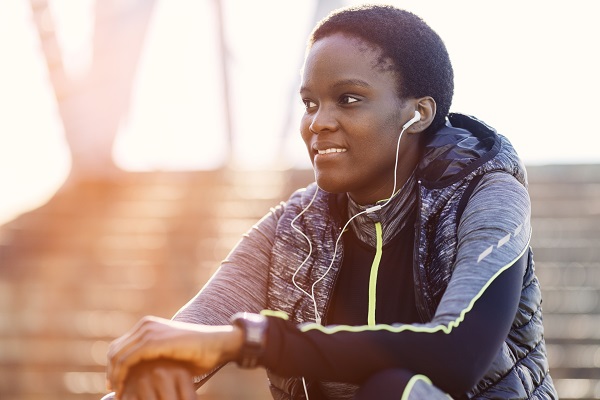New year, new you: What kind of exercise is best for you?
Jan 24, 2019

It’s the new year, and we all know what that means: Gyms are full and so are our promises to turn over a new leaf, making exercise a regular part of our lives. But where should we begin? There are so many types of exercise that it can be overwhelming trying to figure out where to start. What are the benefits of each? Should you try more than one or mix it up from time to time?
At Adventist Health, we know that exercise is an important part of your overall health. So, to help determine what’s best for you, we’re giving you a quick outline of the major types of exercise and the benefits of each. Make sure to check with your physician before starting a new exercise regimen.
1. Cardio
Cardio exercise is any exercise that gets your heart rate pumping, your sweat flowing and your chest heaving. Some examples of cardio include: running, walking, swimming, cycling, riding the elliptical, or playing a sport like basketball or soccer. Regardless of how you like to get your cardio in, it’s an important staple for a healthy lifestyle. This kind of aerobic exercise is important for a healthy heart, but it also creates additional benefits, such as:
- Burns calories for weight loss
- Lowers blood pressure
- Reduces asthma symptoms and back pain
- Aids in sleep
- Strengthens the immune system
- Improves brain power
- Can be done anywhere
2. Weight lifting
While this exercise probably doesn’t need much of an explanation, weight lifting can be done using machines or free weights, depending on your preference. If you’re new to weight lifting, or the act of building your muscles through weighted exercises, it is our recommendation that you hire a personal trainer for a short time to instruct proper form and technique in order to avoid injury. Weight lifting isn’t complicated, but should be done carefully to receive maximum benefits, such as:
- Burns body fat while gaining muscle
- Reduces the risk of osteoporosis
- Improves muscle control and balance
- Increases strength
- Lowers the risk of diabetes
- Prevents back pain
3. Interval and HIIT Training
Interval Training and High-Intensity Interval Training (HIIT) is a great way to get a tough workout in when you’re worried about time. These workouts alternate between periods of high-intensity exercise and low-intensity recovery periods (for example, a series of timed sprints with a timed walking recovery). However, as the name suggests, HIIT is a little more intense with shorter rest times in between exercises. Let’s look at a few of the benefits to interval training:
- Burns more calories (and fat!) throughout the day
- Shorter workouts for efficiency
- Maximum cardio effects for a healthier heart
- No equipment necessary
- Increases metabolism
- Can be done anywhere
- Cuts fat, not muscle
4. Pilates
Pilates is a low-impact, body-weight exercise that focuses foremost on the body’s core. It can be done on a mat or on a special apparatus called a reformer. It is designed to improve physical strength, increase flexibility, posture and promote mental awareness. Pilates benefits include:
- Tones muscles
- Increases flexibility
- Improves balance
- Improves muscle control
- Great place for beginners
- Can easily be done at home or in a class
5. Stretching
Stretching is something you should incorporate into your exercise routine on a regular basis. Though not technically an “exercise” on its own, the act of stretching is just as important to support your physical well-being. Its benefits include:
- Prevents injuries and soreness
- Strengthens posture
- Promotes blood flow
- Promotes flexibility, which assists in all exercise
- Can be done at home or in a class
Regardless of which exercise is your personal favorite, you’ll benefit from mixing it up! A variety of exercises works different parts of the body and keeps you from getting too bored with your routine. And though each kind of exercise keeps your body healthy, exercise also keeps our minds healthy, releasing endorphins and assisting in fighting depression. Exercise won’t just help you look better — it’ll help you FEEL better. Now, that’s one benefit we can really get behind.


